Types and varieties of peonies
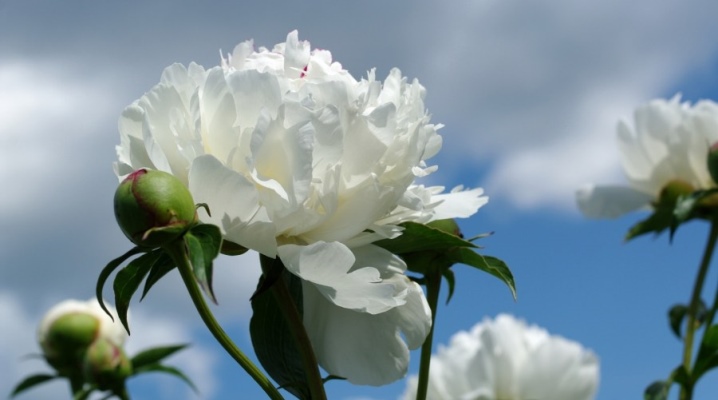
Lush expressive flowering, tart, deep aroma, a huge selection of colors and shades, shapes, the highest decorativeness and not too difficult care make peonies perhaps the most beloved garden flowers. The luxury of this flower, regardless of the variety, is unchanged. As for the varieties of peonies, their classification is so complex that even botanists have difficulty understanding it. First of all, it should be noted that garden peonies are usually herbaceous. It is they who decorate the landscape areas of flower growers. There are also tree-like peonies, which differ in the type of stem, height and diameter of flowering. But garden varietal peonies belong precisely to the herbaceous variety, which, in turn, also has a rather complex classification.

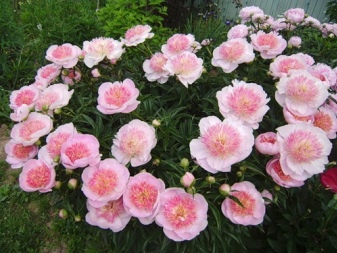
Peculiarities
Garden peonies are perennials, the beginning of their breeding in time is comparable to the ancient period of history - then there were already several dozen varieties of them. Most of the varieties and hybrids were bred by breeders in the 19th and 20th centuries.
Herbaceous peonies are obtained from various crosses of the medicinal species and the milk-flowered one. It is they who have the magnificent large flowers that we are used to seeing in the plots.
Peonies owe their name to the ancient Greek god Pean, the healer of the Olympian gods. He treated them from the most difficult diseases and wounds with the help of magical medicinal plants, and it was he who made the patron god of doctors Aesculapius envy himself. The insidious Aesculapius poisoned Pean, but the god of the kingdom of the dead, Hades, cured by him in his time, turned him into a beautiful flower.
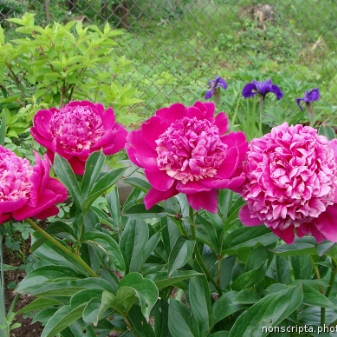
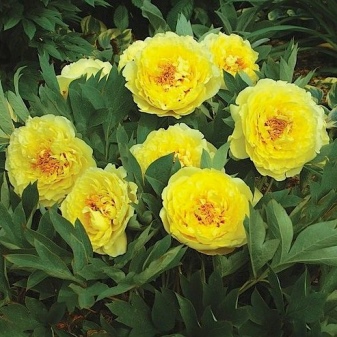
Garden peonies have a thick root, the development of which takes place in a rather non-standard way. Fresh roots-appendages appear every year, and the previous root processes become larger and stronger, transforming into tubers. The root system of peonies extends almost a meter deep, and up to half a meter wide. In the winter period, the stem part of the plant dies off, in the spring it grows again.
Distinctive characteristics of the plant:
- the bush reaches a height of half a meter to a meter, depending on the variety;
- has the shape of a spreading, lush, but straight bush;
- branchy shoots, they have rather large complex foliage;
- the leaf is dense, dark green, of a spectacular shape, decorating the flowering with volume, texture, expressive graphics;
- in the fall, the foliage turns dark crimson and decorates the landscape until frost;
- the most striking distinguishing feature is the large, spectacular apical-type bloom;
- flowering begins after planting for 3 or 4 years;
- flowers of a single species or collected in inflorescences of 3 flowers at the top of the plant;
- petals are round or oval, their edge is slightly wavy, they are collected in a corolla, holding on to a cup of sepals, the number of which reaches 10;
- the flower has many stamens with anthers;
- flowering is characterized by splendor, luxury and high decorativeness, the texture of the flower is satin, delicate;
- the shape, size, degree of terry flowering differ depending on the variety;
- flower diameter varies from 10 to 20 cm;
- flowers are characterized by a pronounced intoxicating aroma with tart and sweet notes.
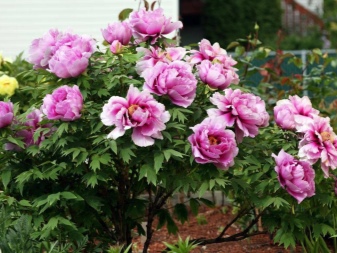
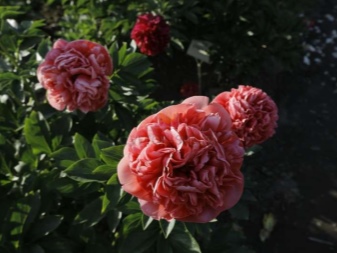
The flowering period begins in May and lasts until early July, depending on the variety.
Terry varieties have a longer flowering period.
If we take the average indicators, then the flowering of peonies, as a rule, does not exceed a three-week interval, which can be increased due to proper care, comfortable temperature and humidity. After the flowers fall, multileaf fruits are formed.
What colors are there?
The variety of colors and shades of peonies is striking in its magnificence. Every gardener can choose peonies to his taste. In addition to the classic palette, varieties of unusual colors have been bred - green, black.
White peonies Are the royal varieties that have become the starting point for breeders. The following varieties are spectacular representatives of this color.
"Mom's beloved." Tall shrub with large double (up to 18 cm) flowering of a snow-white tone with a subtle aroma.
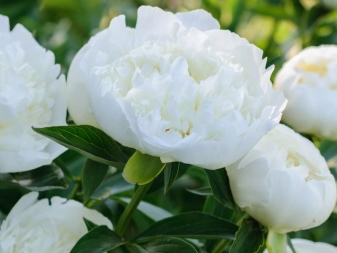
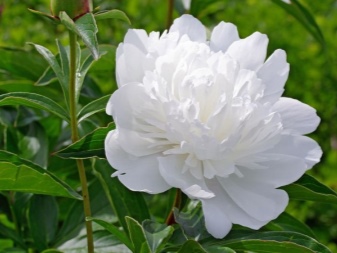
- "Moon River". The bush is a lover of sunlight, rather tall, with a large, perfectly shaped flower with a diameter of up to 20 cm and a creamy shade, which, when blooming, can acquire a light pink undertones. Differs in not too pronounced aroma and late flowering, as well as the absence of pistils and stamens.
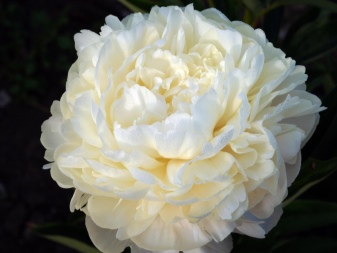
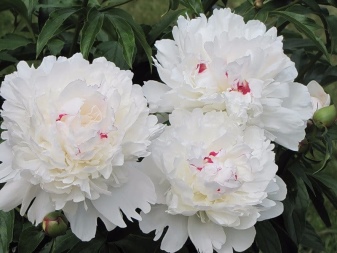
Pink peonies - This is one of the most popular varieties, which is very popular with flower growers. The gamut is very rich in shades of pink, it ranges from the palest tones to luscious purples.
The brightest representative of the pink group is Sarah Bernhardt... This variety is already more than a century old, it is distinguished by a luxurious dense semi-double of large (more than 20 cm) flowers with concave-type petals, the edges of which are distinguished by a lighter shade of pink.
The tall bush looks very aristocratic and impressive, it became the ancestor of lilac and red varieties.
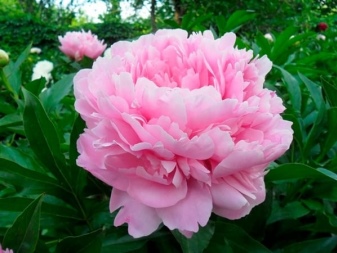
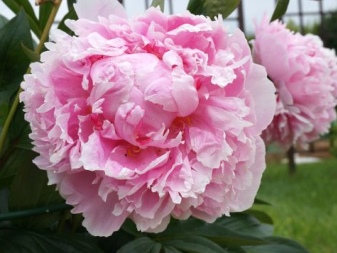
Lilac peonies - these are quite rare flowers. They cast purple, often have several iridescent tones. A popular representative of this color range is “Altai News”. This domestic variety is highly decorative despite the simple flower shape without terry. The petals are wavy, two-row, the stem is strong, tall, the flowering is not too large, openwork type, abundant, up to 100 flowers per bush, the aroma is strong.
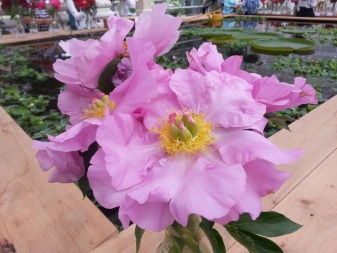
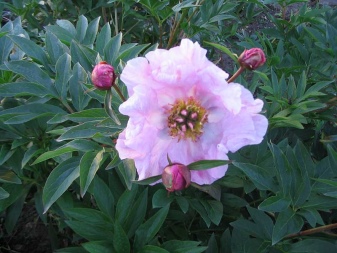
Burgundy - this is a very popular species among gardeners, although there are not so many varieties in this range. It is quite difficult to bring out the classic tone of burgundy peonies.
"Armani" - a tall shrub with brilliant foliage, its buds are dense, with terry. Petals of different sizes, shimmery, rich tone, deep, imperial.
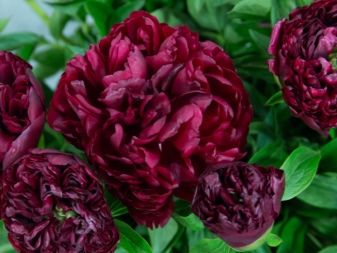
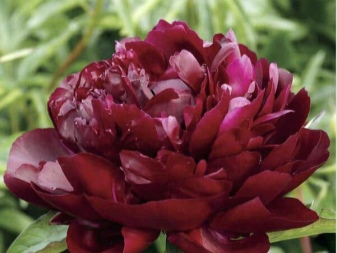
- Peter Brand - tall shrub, strong, sturdy, bright foliage. The flower is large, decorated with terry, similar in type to a rose, the color is deep burgundy, the inflorescence can be two- or three-flowered.
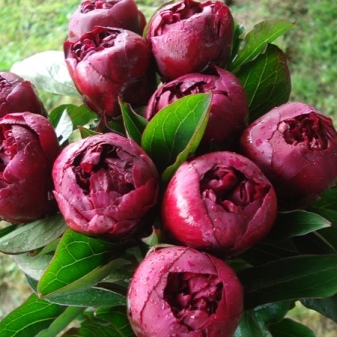
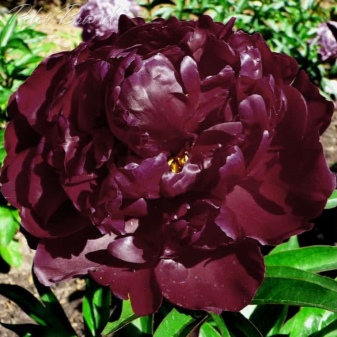
Red peonies have one of the most striking and expressive palettes and look luxurious in the landscape. Flower tones range from cinnabar to bright scarlet.
"Typhoon" - a domestic variety that has bright scarlet flowers like a ball with a terry, up to 15 cm in diameter. They have a curved petal of various sizes, a tall, strong-stemmed shrub, and an unexpressed aroma.
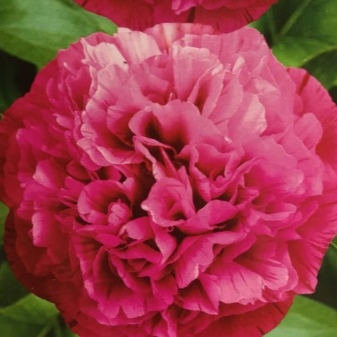
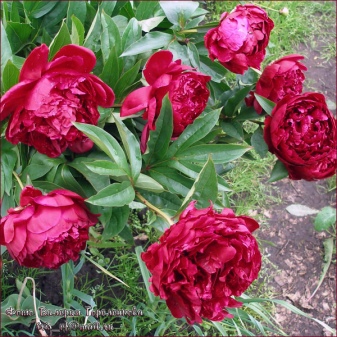
- "Hot chocolate" has double-row petals of juicy red color, which are shimmery. The stamens are bordered with golden dots, the shrub is tall, the flowering is not too large. A very expensive variety.
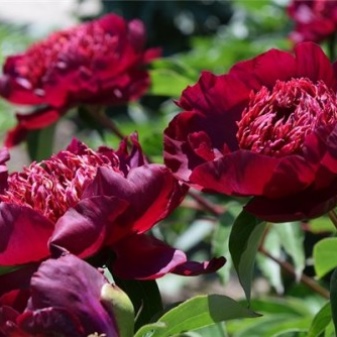

Yellow peonies rarely found, most often they are diluted with splashes of shades of lemon, sand, terracotta. Peonies of these shades were rather difficult to remove, since this pigment is unstable. The best representative of the species is the Lemon Chiffon variety. Bred in Holland, it is distinguished by a spectacular semi-double, turning into double after a few years of flowering. The bud is very large - up to 24 cm, has a light lemon shade with stamens of a darker yellow tone, is not subject to fading, the bush is strong.
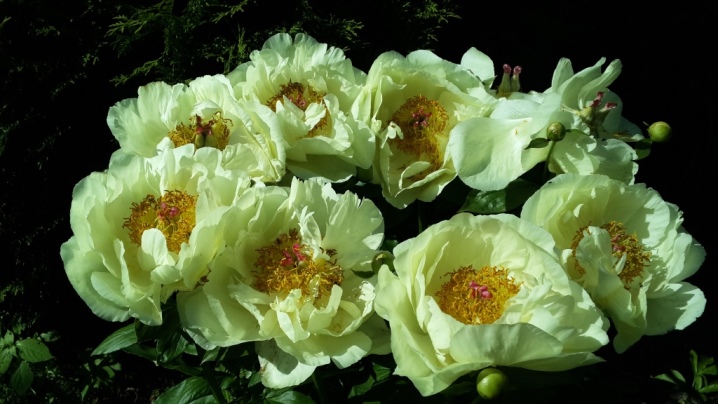
Coral - this series of peonies, which was bred in the middle of the twentieth century and immediately gained immense popularity.A distinctive feature of this color is fast and rather strong fading from sunlight. Best Representative - "Coral Beach".
This variety resembles a lotus in the shape of a heart-shaped petal.
Blossoming is large - up to 20 cm, can change tone during flowering to peach, sweetish aroma, tall and strong bush.
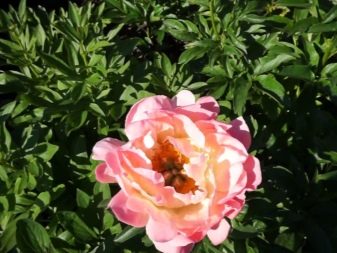
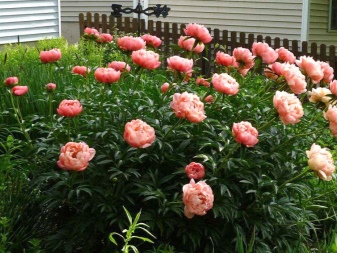
There are not very many rare flowers of peonies. Most often they are tree-like, but they are also found among garden ones. Original representatives.
- "Striped lollipop" - differs in a dense cream shade with raspberry and pink streaks. The flowers are large, the bush is tall, they have a floral aroma with fruity notes.
- "Purple spider" - the flower is non-standard in shape, its shade is close to fuchsia, plate-shaped petals, stamens with pink dots, fragrant. Flowering is medium-sized.
- "Bean" - the flowers of this variety resemble a bomb in shape. The stem is long, with semi-double and double, depending on the flowering period. The shade of the flower is almost black, the size is large.
- "Green ball" - the flower has the shape of a bomb, bloom with terry, large, the shade of the petals is light green.
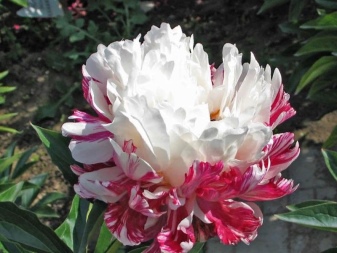
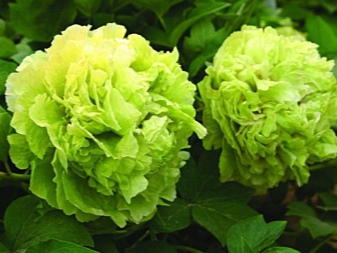
Varieties
In addition to the division into woody and herbaceous species, there are other, more complex classifications of peonies. Due to the fact that the number of varieties has already reached 5 thousand, and every year breeders are breeding more and more new varieties, it is very difficult to classify herbaceous peonies. Most of the modern varieties are bred by breeding the milk-flowered peony. By itself, it is characterized by a large flower of light shades, resistance to cold and disease.
Conventionally, these flowers are divided into pure milky-flowered varieties and hybrids derived from it. They differ:
- juicy, deep shades of flowering;
- lush foliage;
- early flowering.
The classification depending on the type of flowering is considered the simplest. According to the presence and degree of terry, the following groups of plants are distinguished.
- Non-double... It includes two-row and single-row five-petalled plants - the simplest of all.

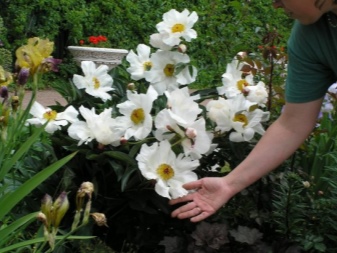
- With semi-double. Includes three or more row types of petals, which, in turn, are divided into the following subgroups:
- japanese - with large petals in the center and a two-row rim;
- anemone - their corolla is single-row, there are many stamens turning into narrow petals;
- typical semi-double - differ in separate stamens, the corolla is two- or three-row.
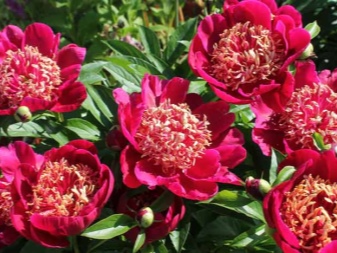
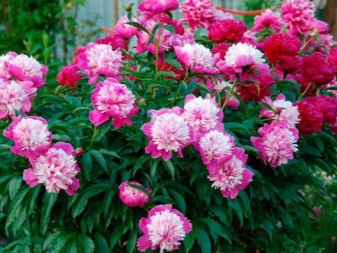
- With terry cloth. They are distinguished by lush flowers, framed by thick terry. It contains the following subgroups:
- spherical - they look like dense bombs or balls, the large petals of which are located horizontally;
- hemispherical - resemble saucers with hemispheres, their terry is thick, the petals are not wide, bordering the larger petals along the outer radius;
- rosaceous - the terry is dense, the flowers are small, compactly decorated, the petals are folded into one whole;
- semi-pink - their makhra is thick, resembles a rose in its appearance, in the center there are stamens in a bunch;
- castellated - the petals are narrow inside, in the shape of a crown, expanding closer to the edges.
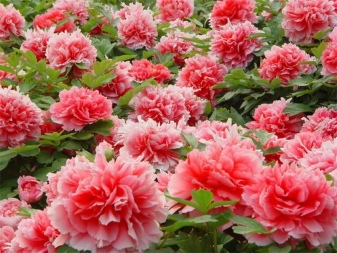
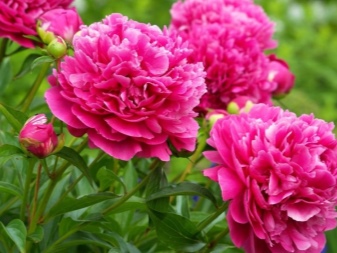
According to the height of the bush, peonies are divided into:
- low-growing - up to 50 cm;
- medium - from 50 to 90 cm;
- high - from 90 cm.
There is another way to subdivide peonies - depending on flowering time:
- early flowering;
- medium flowering;
- late flowering.
There are also rare endangered species, for example, mountain peony. It is listed in the Red Book, as there is a high risk of its disappearance.
It has medicinal properties, is very attractive to flower growers due to its rare beauty, but practically does not take root after transplantation.

Popular varieties
The variety of varietal peonies literally boggles the imagination, and every year there are more and more of them.
When choosing flowers for your site, be sure to evaluate the resistance of the shoots - as a rule, the younger the variety, the more robust they are.
We present you the most popular varieties of this plant among florists.
"Old Faithful" - spectacular dense flowers with luxurious crimson terry. The height of the bush is up to 90 cm.
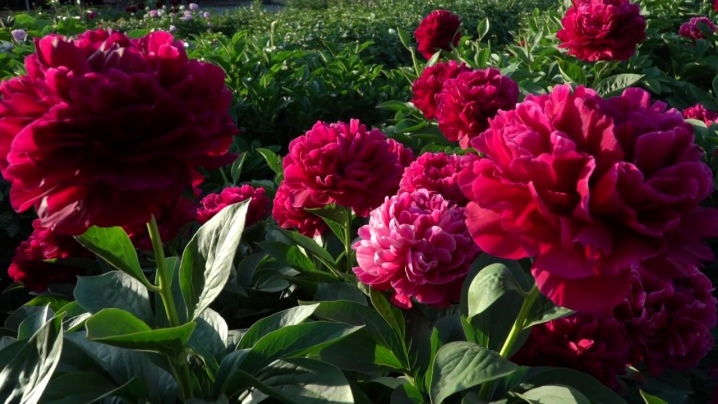
"Green halo" - original snow-white flowers with an unusual border of light green color. The bush is of medium height, the diameter of the flower is up to 10 cm.

"Bowl of beauty" - one of the most non-trivial varieties. The flowers are large, with a wide edging of pink petals. Inside the flower is snow-white, double, lush.
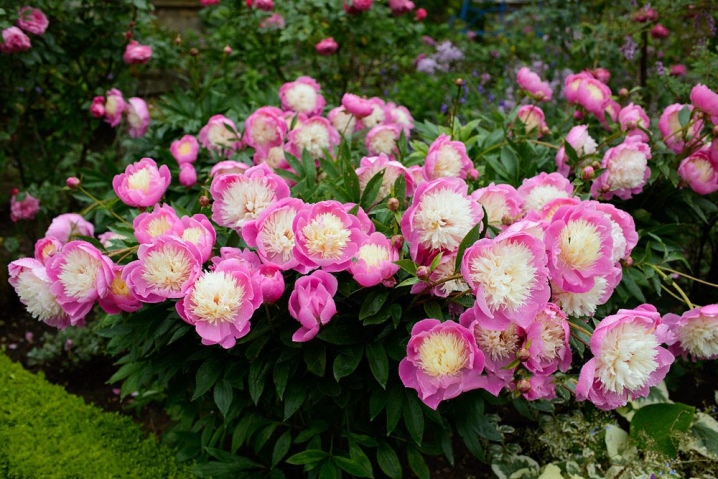
"Elsa sass" - delicate white flowers with a light pinkish veil in the middle of the petals. Bushes of medium height, late flowering.
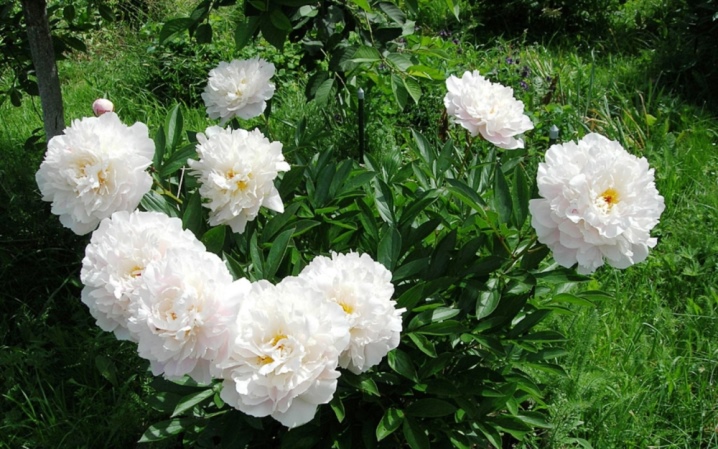
- "Salmon Dream" - has a large salmon-colored flower with a yellow double core.

"Nancy Norma" - pink flowers of double type. The variety is distinguished by its grace and density of foliage. The shade of the petals is light with white-purple tones. Flowers are not subject to fading, aroma is persistent.
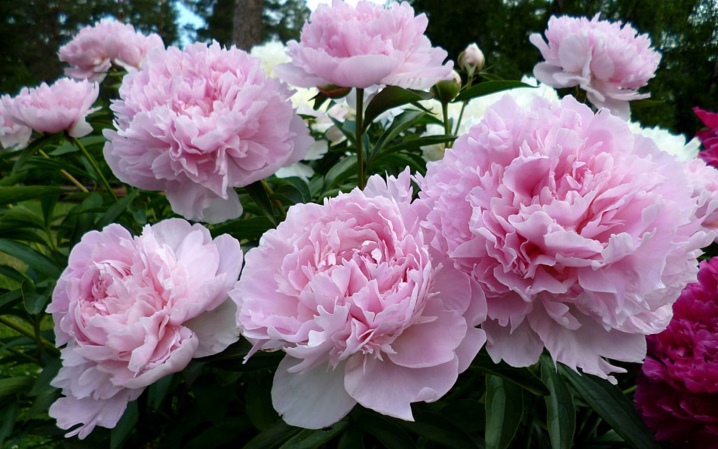
Celebrity - flowers with a chaotic arrangement of petals in rich pink and white. The bush is tall, blooms for a long time.
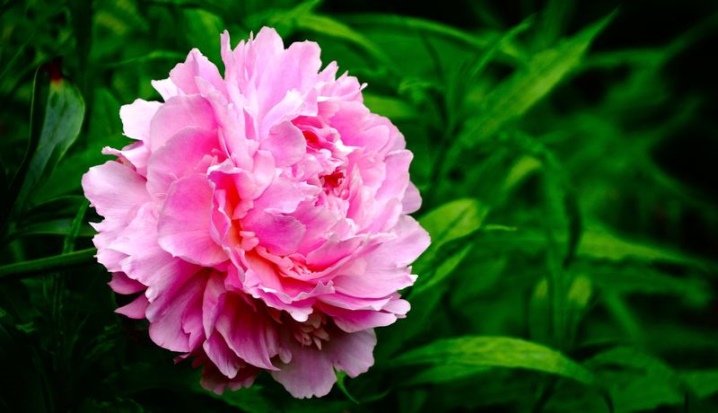
"Cora stubs" - one of the most popular varieties in the middle lane. The color is pink with different shades, there is an abundant terry in the center, wide petals at the edges.

"Bowl of cream" - the flower has a creamy milky shade of petals, and the middle is yellowish, bright.

- "Doo tell" - an unusual peony of a pale pink tone with a double middle. It is found in different shade variations.
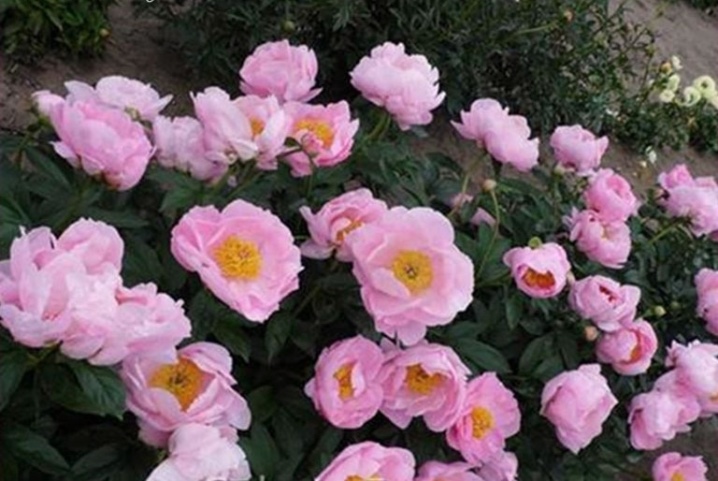
"Summer Glau" - has a spherical shape of flowers with an exquisite shade of cream, peach with tints.
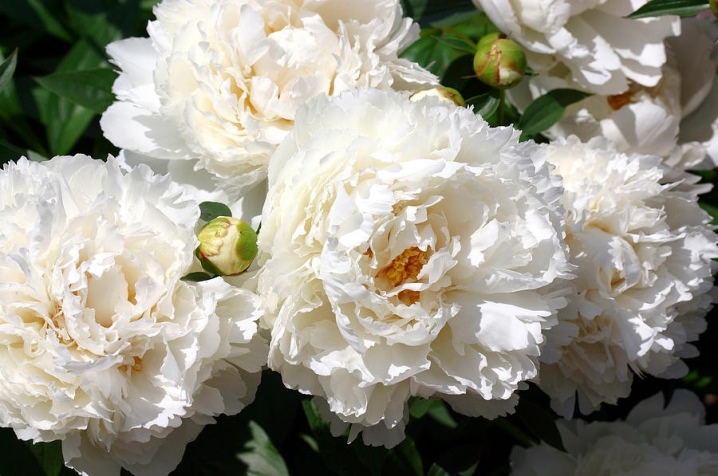
"Dress" - looks like a mountain peony. Flowers with a bright yellow center and large dark cherry petals.
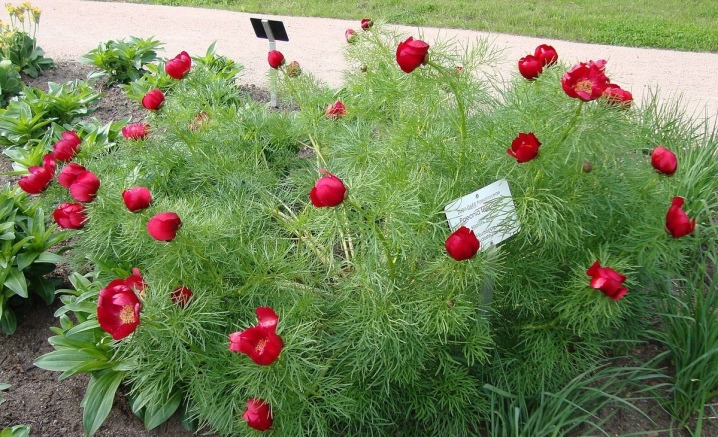
"Pastel splendor" - one of the most unusual varieties, its flower has a yellow dense center with a crimson border, turning into barely pink, almost white, wide petals at the edges.
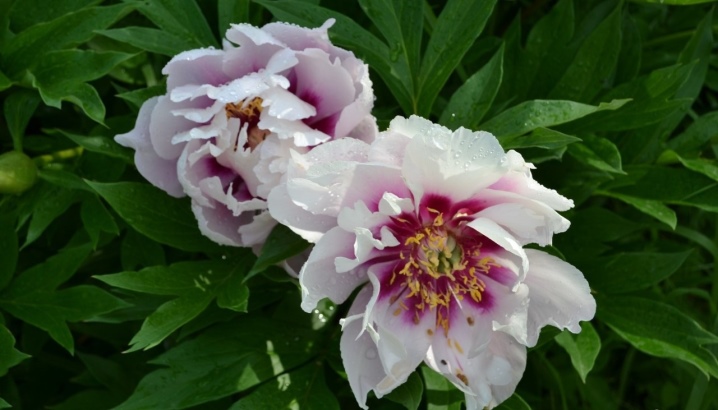
Pillow current - bomb-shaped peony, which has a very large bloom of light pink, sometimes with light lilac color.
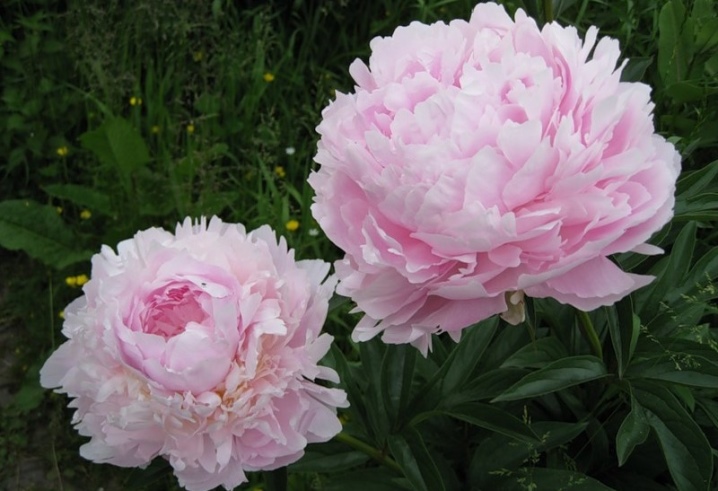
- "Pearl placer" - a variety with an average flowering period. Medium-sized shrub with white-pink flowers.
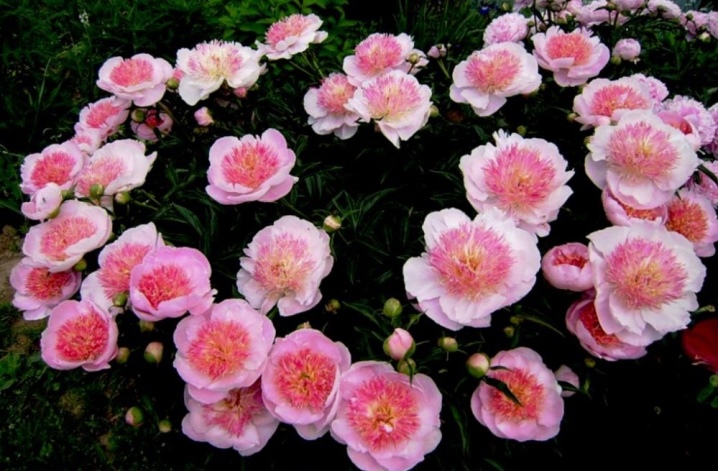
Examples in landscape design
When it comes to placement in the landscape, peonies are one of the most popular garden flowers that are good both in the garden and when cut. They stand perfectly in bouquets. Landscape designers recommend planting peonies in plots for the following reasons:
- they fit perfectly into any ensemble, regardless of the chosen style;
- good as single inclusions in the composition, and in complex tandems;
- look very impressive due to their high decorative effect;
- allow you to create both lush, voluminous ensembles, and structured ones.
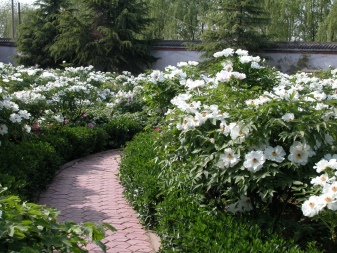

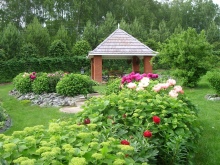

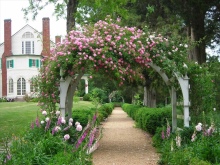
Design Tips:
- use peonies in the middle zone of the composition;
- these plants look good in flower beds, alpine hills, borders;
- they can effectively decorate a lawn with them, frame a path, decorate a terrace, ceremonial flower beds;
- use peonies where a bright accent is needed.
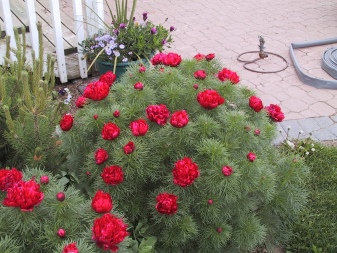
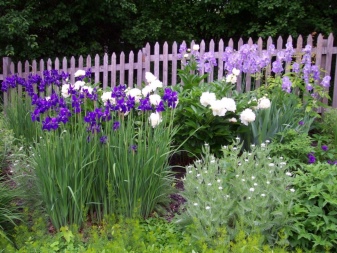
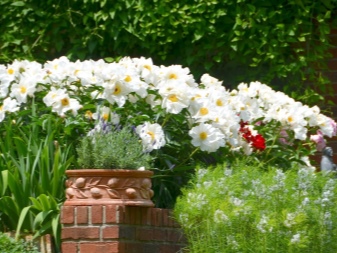
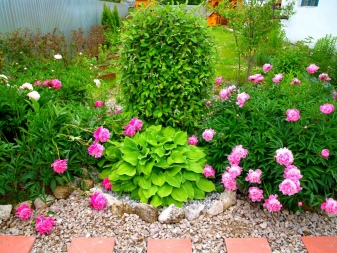
The best partners for a peony on the site:
- sage;
- veronica;
- catnip;
- cuffs;
- geranium;
- yarrow;
- iris;
- sagebrush;
- lily;
- aster;
- delphinium;
- primrose;
- phlox;
- geyher;
- digitalis.
A combination of peonies with tulips, crocuses, forest trees, forsythia, roses, dicentra, barberry, violets, ivy is possible.
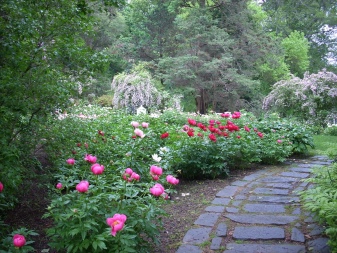
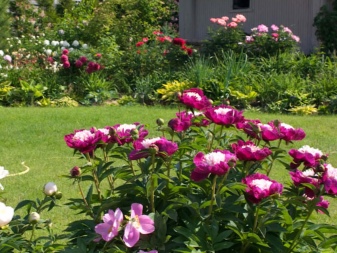
For a video about peony varieties, planting and care, see below.







































































































The comment was sent successfully.